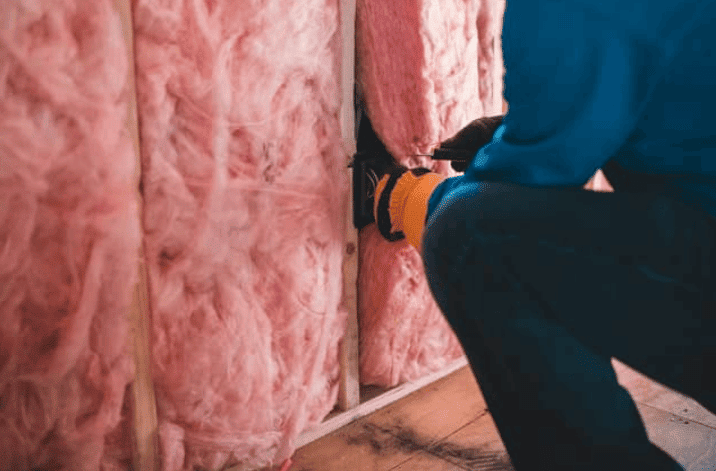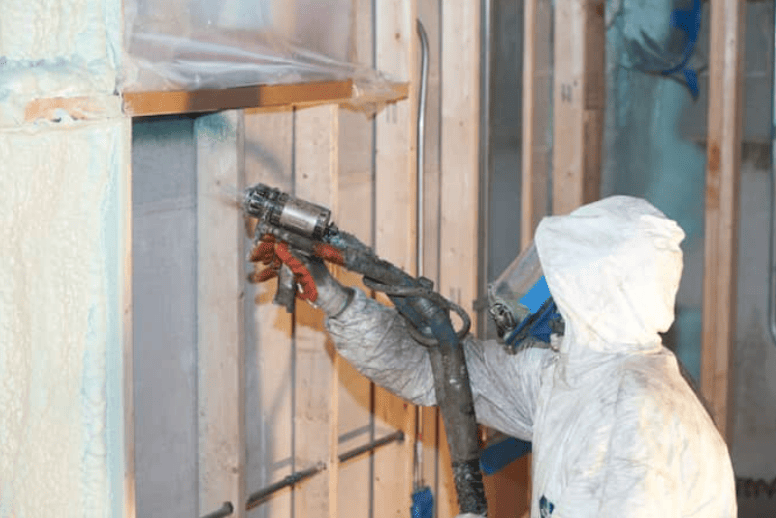You already know you need new insulation in your house, or you wouldn’t be researching the best types of insulation to get!
Truth be told, that’s where people get hung up, because they know they have options, but not why there are so many in the first place. Isn’t insulation over here the same as insulation over there?
As with most things related to home improvement, products are separated by price point and effectiveness, and you have to do what’s right for you, your wallet, and your home.
Below, we’ll detail the most common types of insulation and lay out their pros and cons so you can decide for yourself what is best.
By the way, you can check out this table to see the information below boiled down to the essentials:
| Insulation Type | R-Value | Cost |
|---|---|---|
| Fiberglass Batts | 2.9-4.3 per inch | $25-$100 per roll |
| Blown-in | 2.9-3.7 per inch | $15-$140 per bag |
| Foam Boards | 3.6-4.0 per inch | $1.00 and up per sq. ft. |
| Spray Foam | 3.7-6.2 per inch | $0.50-$5.00 per sq. ft. |
When you’re ready, you can call in Homeowner Funding for professional home insulation installation and financing!
How Do We Grade the Different Types of Insulation?
Before we get into the types of insulation, let’s talk quickly about how professionals grade insulation using R-values.
Insulation is assigned an R-value based on its effectiveness in preventing heat transfer. Common sense tells us that the thicker the insulation material, the less transfer you’re going to have.
The best types of insulation have higher R-values. They also cost more upfront, but of course, the money they save you on energy bills over time could make it all worthwhile.
Which Type of Insulation Is Right for You?
Now let’s get into the different kinds of insulation you have available to you.
As you go through these, remember that the right insulation for your home depends on the climate in your geographical area and the type of home you have. You may not necessarily need the insulation with the highest R-value.
1. Fiberglass Batt Insulation
One of the most commonly used types of insulation is fiberglass insulation, which comes in flat sections called batts.
These look like blankets of foam, but they’re really made of fine particles of glass and plastic. You can cut them as needed and then fit them up between ceiling joists and wall studs before drywalling or otherwise covering them.

Fiberglass bats aren’t the highest-rated when it comes to R-value, and user error can lead to them being less effective than they should be (if you’re not sure of how to do it, call a professional!).
However, many people go for fiberglass batts when insulating their homes because they are friendly to users and their wallets. You can get a roll for anywhere between $25 and $100, and the R-value can range from 2.9 per inch of insulation to around 4.3 per inch.
2. Blown-In Insulation
Another type of insulation you’ve probably heard of is called blown-in insulation. Just like it sounds, this type of insulation is sprayed into the attic or behind the walls as fine particles that resemble dust or snow.
The main benefit of blown-in insulation is that it can get where fiberglass batts can’t. If you have an irregularly shaped attic or existing walls that you don’t want to tear down so you can install batts, blown-in insulation could be your way to go.
You have a few choices when it comes to the insulation material that you’re blowing in.
First up is fiberglass insulation, just like what you can find in batts. It’s the same material, just blown into the space in pieces rather than inserted as a rectangular chunk.
Then there’s cellulose, which looks similar to blown-in fiberglass but is made of finely shredded pieces of paper and cardboard. It’s cheaper than fiberglass and has an R-value of around 3.7 per inch. You can get a bag for around $15, but of course, different sizes and grades of it cost much more.
The last most common blown-in insulation type is rock wool. It appears like spun cotton just as fiberglass and cellulose do, but it’s actually made from the iron leftovers of a blast furnace.
You’ll get an R-value of 3.3 per inch from rock wool, but where it wins is in its fire resistance. Rock wool insulation is popular as insulation between the walls of a double-block house. The drawback is that rock wool insulation costs well over $100 per bag, and that makes it cost-prohibitive for the average homeowner to buy.
The other thing to keep in mind is that blown-in insulation needs a special machine to blow the insulation. Unless you’re experienced in doing this yourself, you’ll need a professional installer for the job.
3. Foam Board Insulation
Another common and simple type of insulation that remains popular is foam board insulation. These boards are usually made of expanded or extruded polystyrene and come in thicknesses of half an inch up to about four inches.
Their R-values depend on the type of foam board you get. Expanded polystyrene is the most budget-friendly and has an R-value of 3.6 to 4.0 per inch, but most people prefer extruded polystyrene. The extruded variety has an R-value of 4.5 to 5.0.
Foam boards cost a bit more than fiberglass batts. You might pay up to $1.00 per square foot for foam boards, and even more when you include the labor of professional installers. Just remember you can get 4 feet by 8 feet of coverage out of a board.
Foam board insulation is the right option for areas of your home that are at risk of getting moisture, as the boards are moisture-resistant. Compare that to fiberglass or blown-in insulation, which are all susceptible to losing their effectiveness if they get wet.
If you have a solid roof and no reason to fear moisture infiltration, you don’t absolutely need to go with foam boards for your insulation choice.
4. Spray Foam Insulation
As you’ve shopped around for home insulation, you have probably also come across spray foam insulation. This is an effective type of insulation, but it may not be all that practical for the average homeowner due to its cost.
Spray foam is made of polyurethane that starts out as a soft, moldable substance that expands to fill the smallest spaces in the insulation area. The foam then hardens and is good to go.

There are two types of spray foam insulation to consider: open-cell and closed-cell.
As you might expect, open-cell foam leaves more air in it as it expands, and it’s moisture-permeable. So, if you have moisture problems in the areas to be insulated, you’d want to go with closed-cell spray foam.
Closed-cell foam insulation has much more volume to it and will block moisture if that is your concern.
Now, there are a few down-sides to spray foam insulation. One is its cost. You’re getting good R-values from foam, but you pay for that convenience. Open-cell spray foam can give you an R-value of 3.7 per inch, while closed-cell foam can give you an R-value of 6.2. But you could end up paying anywhere from $0.50 to almost $5.00 per square foot for spray foam insulation.
That could amount to an insulation job costing thousands of dollars. Spray foam needs professional installers to get it right, so you’re paying for the materials and labor.
If you want some of the best insulation out there, though, spray foam is one way to go.
Choose from the Best Types of Insulation with Homeowner Funding
Whatever type of insulation you end up going with, know that professional insulation installers have this stuff down to a science. It all depends on the climate of your area and what you can afford, but you can’t really go wrong with any of the insulation types on this list.
When you’re ready to upgrade your home’s insulation and start saving big time on your energy costs, call Homeowner Funding. We’ll finance the job, set you up with our trained technicians, and explain all the details of your repayment plan.
Get in touch with us today to learn more about us or to get a quote on your job!